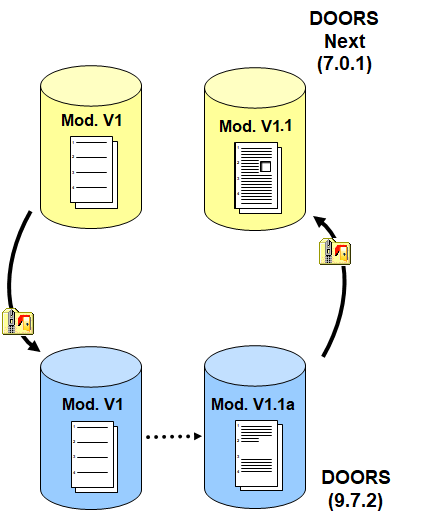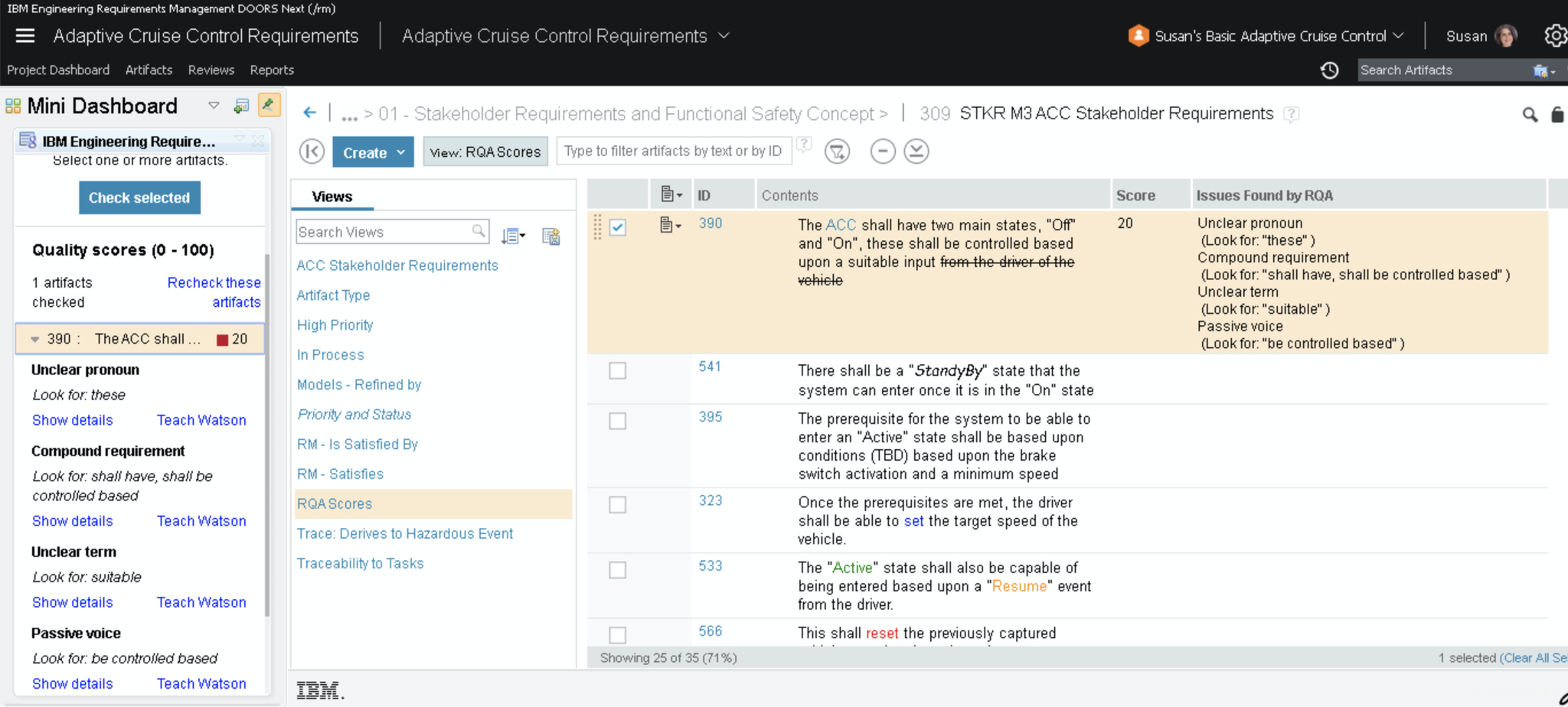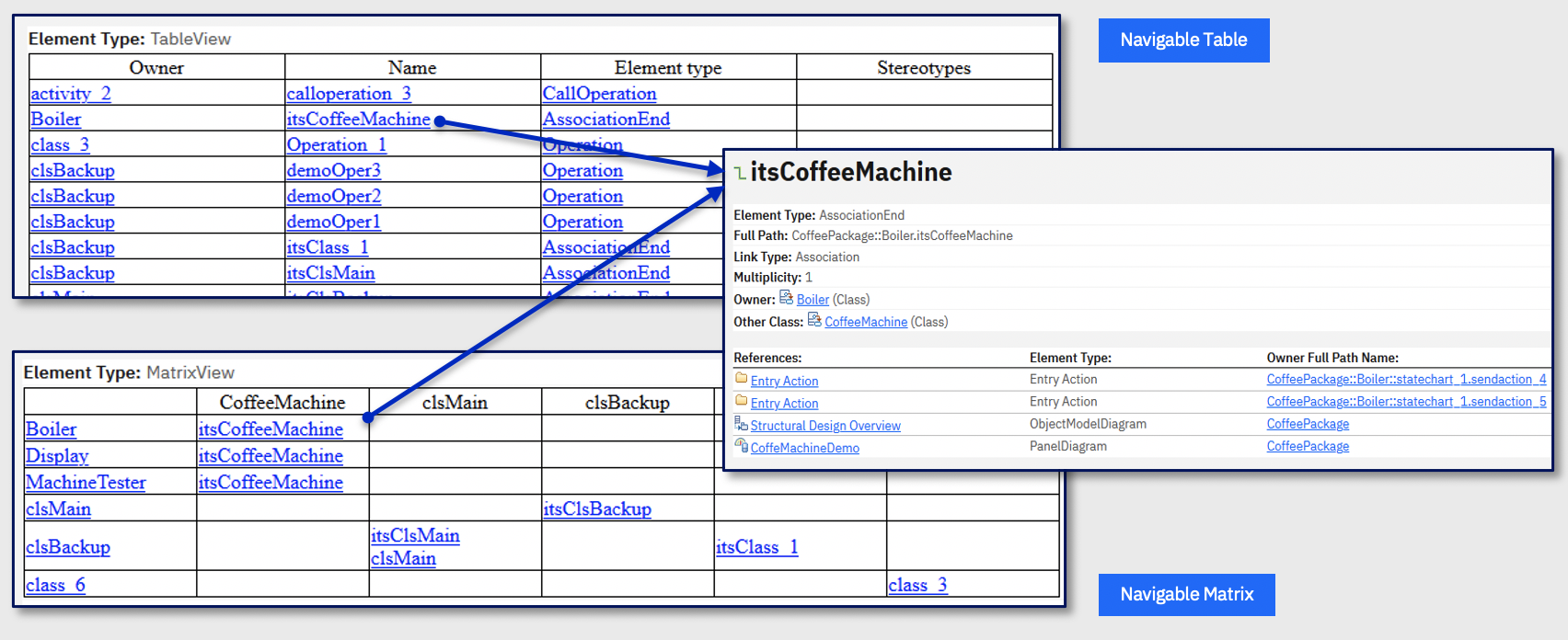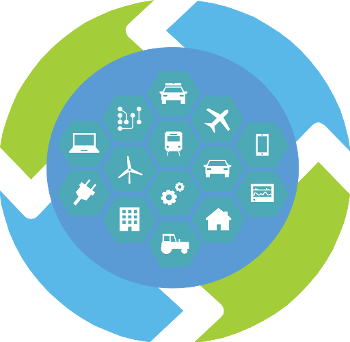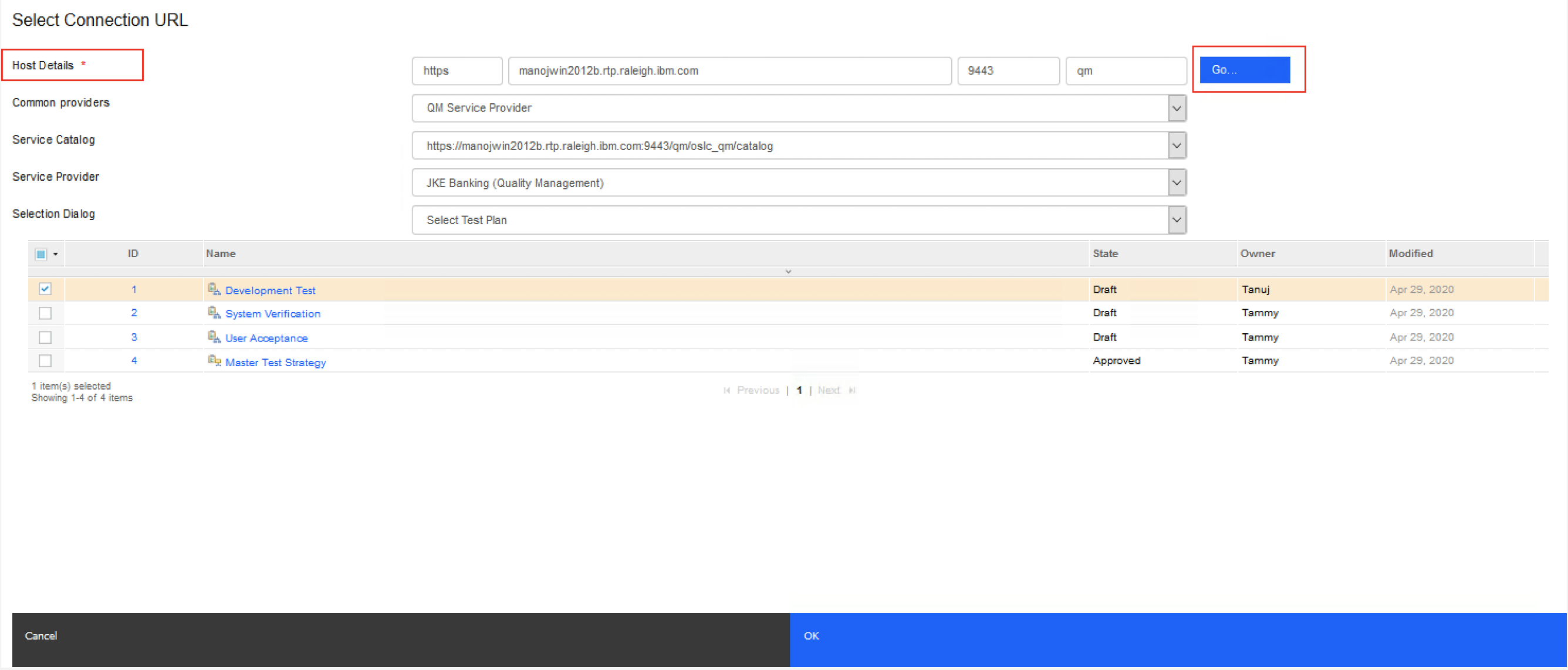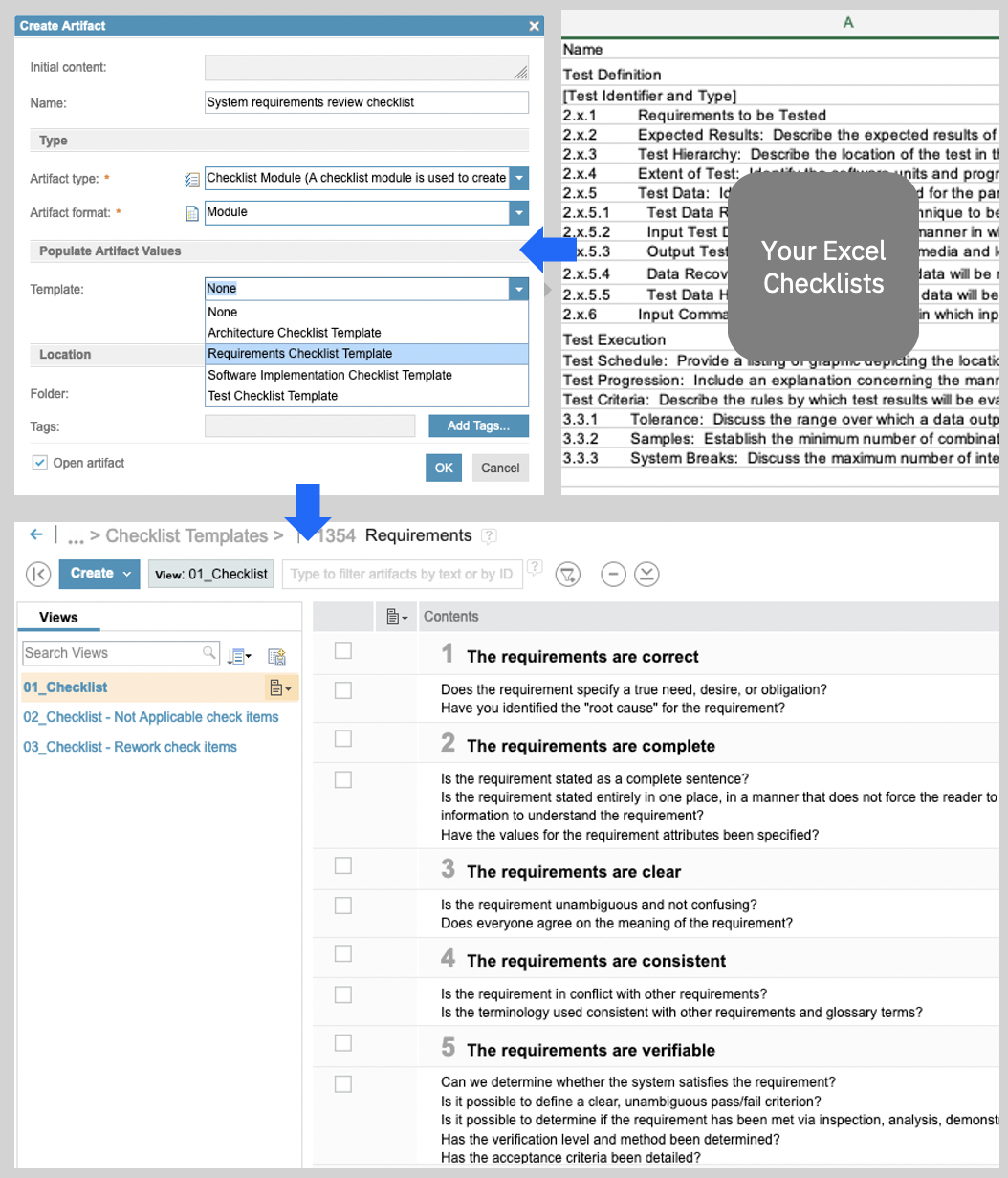by Christophe Telep
This new release of IBM Engineering Workflow Management (EWM) brings additional capabilities in all the product areas: agile planning, source control, build, Git integration as well as enterprise extensions. Similarly, in this new release of IBM Engineering Test Management (ETM) version 7.0.1, you will find many improvements in several functions including test planning, test execution or the ETM Excel importer. I am delighted to have the opportunity to share a couple of the key enhancements for each of these products.
IBM Engineering Workflow Management (EWM)
Agile Planning
In version 6.0.6.1, a new Program Board graphical view was added to provide enhanced support for iteration planning at the program or team level. The Program Board shows dependencies in a specific scope, such as across programs or teams. With v7.0.1, users can now create multiple Program Boards in a project area and share them with project members, team members or individual users.
Multiple Program Boards
This release adds two predefined process templates that support Scaled Agile Framework® (SAFe) version 5.0:
- Essential SAFe 5.0: Use this template to establish a Program/Team tooling environment.
- Full SAFe 5.0: Use this template to establish a Portfolio tooling environment with the Large Solution layer for the Full SAFe 5.0 configuration. This environment is associated with one or more Essential SAFe Program/Team tooling environments.
Source Control
In the code review capability, issue types and resolutions can now be defined to more easily track and report on code review status and outcome. A new preference is available to allow modification of resolved issues after the code review is closed including changing their type or resolution and adding comments. However, resolved issues cannot be reopened. Developers can add a comment when submitting change sets for code review and when resubmitting after modifications. Reviewers can also add a comment when submitting review assessments and they can adjust the automatically calculated time spent on the review. Code review approvals can be set as conditions for the deliver operation in the “Require Work Item Approval” advisor.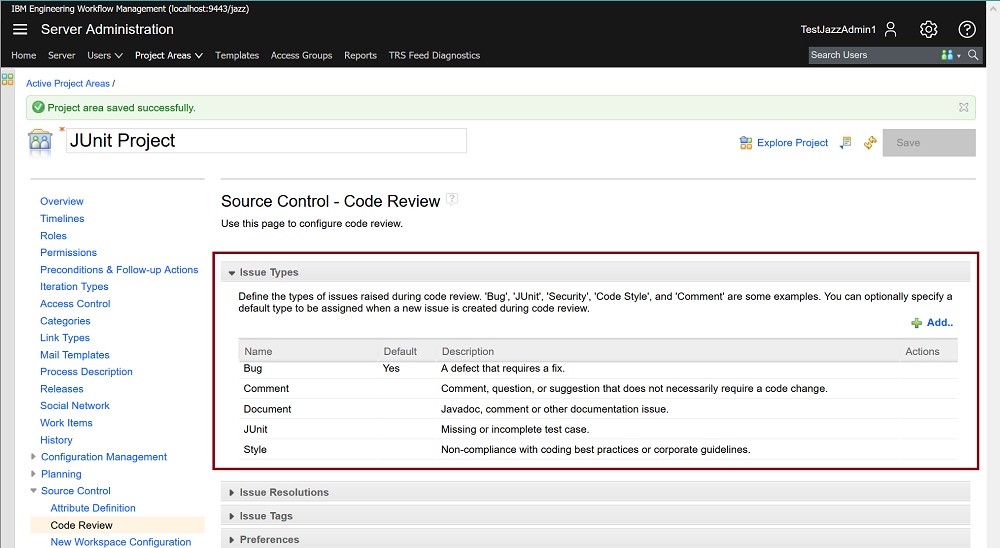
Code Review Issue Types
Build
The new option named “optimized incremental load” will speed up the loading process part of a Jazz or EWM Jenkins build. When enabled, only modified files are fetched from the workspace, local changes are not reverted and untracked files are not deleted.
Git Integration
When submitting Pull Requests in GitHub or Merge Requests in GitLab, links to EWM work items can be created by specifying the work item number in the pull or merge request description. The status of the pull requests and merge requests linked to a work item is now shown on that work item Pull Requests tab.
Enterprise Extensions
A new REST API allows the promotion of z/OS work item packages. If the option to generate a UrbanCode Deploy packages has been configured, the source change set metadata generated on the packages can be used as an input parameter for this Package Promotion API. The deployment system can run customized deployment processes that issue calls to this API to synchronously (or asynchronously) deliver the change sets while their version is being deployed. To validate whether the change sets are not in conflict with the production’s source state before deployment, Package Promotion might be called in the preview mode.
IBM Engineering Test Management (ETM)
Test Planning
A new Suspect Result status for Test Case Execution Records automatically flags tests that may need to be executed again. It is automatically set on the test case execution records when the corresponding test case or the test script has been modified after the last run. Users can get notified by email when execution records are marked suspect.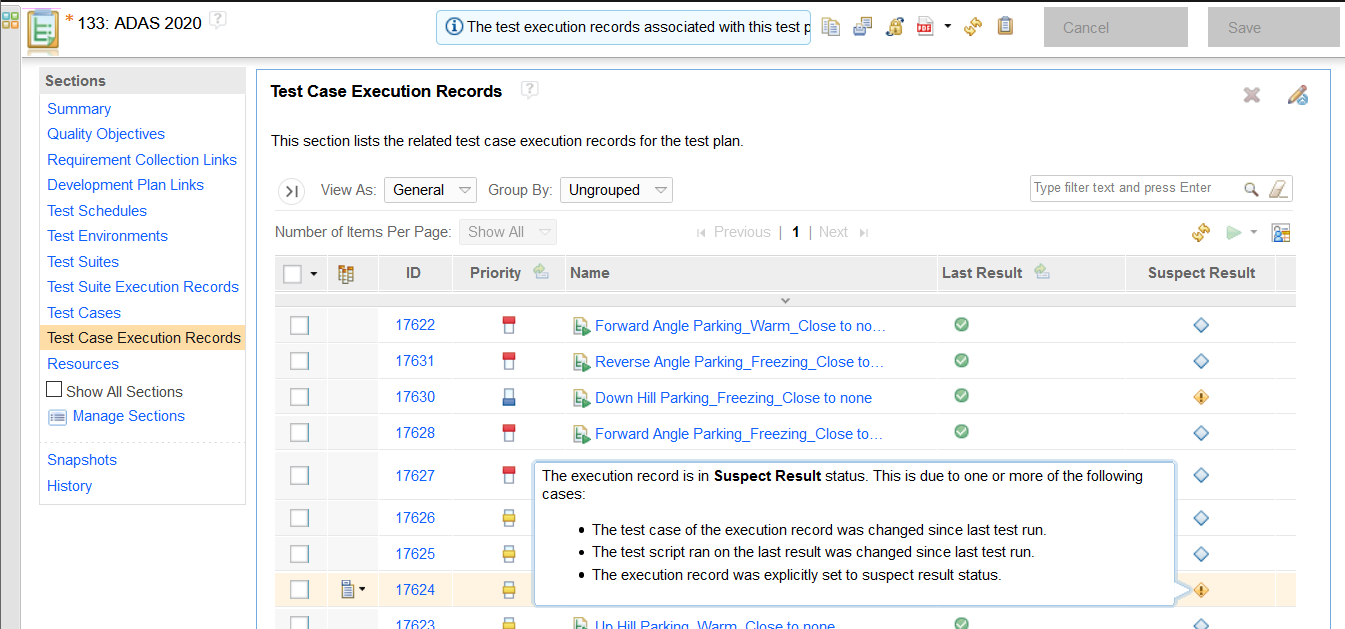
Suspect Result
Users can link multiple test cases to the same set of lifecycle artifacts, such as requirements, in one single action. They can also associate one Test Script with multiple Test Cases in one gesture.
Test Execution
Two new preconditions – Disallow execution of Test Case/Suite Execution Record without current iteration association – can now be associated to the Execute Test Case/Suite operation in the project area administration page. When one of these preconditions is enabled for a user role, users with that role cannot run the test case/suite execution records which are not associated with the current iteration. The objective is to prevent users from selecting the wrong records by mistake and running tests planned for a past or a future iteration.
ETM Excel importer
The ETM Excel importer has received a large set of enhancements including the ability to link test cases to existing requirements in specific modules, the option to save authentication credentials and more detailed messages displayed in the progress UI when the import operation fails.
Those are only a few of the many enhancements delivered in these new releases of IBM Engineering Workflow Management and IBM Engineering Test Management. To see a complete list of enhancements for EWM v7.0.1, please see https://jazz.net/pub/new-noteworthy/ewm/7.0.1/7.0.1/index.html. To see a complete list of enhancements for ETM v7.0.1, please see https://jazz.net/pub/new-noteworthy/etm/7.0.1/7.0.1/index.html.
Thank you for your continued support and stay safe.


